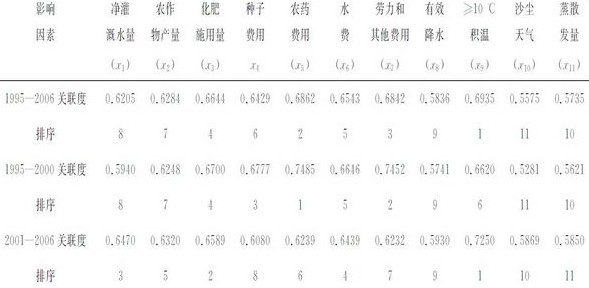Gray Correlative Analysis of Wheat Water Productivity and Impact Factors in Oasis Irrigation Districts
Updatetime:2011-01-10From:
【Enlarge】【Reduce】
Water productivity (WP) is not only an integrated criterion of agriculture production, but also an important index of the scientific soundness and reasonability of water use strategy. Taking HongShuiHe irrigation districts of the Heihe River Basin as an example, we estimated the WP of the spring wheat by collecting and using the irrigation water use, crop yields and weather data from 1995 to 2006. It was showed that the average water productivity of spring wheat is 0.983 kg\5m-3 during the period of 1995—2000, and the value has been increased 8.9% to 1.070 kg\5m-3 since the water-saving project was launched and realized during the period of 2001—2006. Due to the fact that there are many kinds of factors influent the value of WP, we chose the most possible factors (totally 11 factors ) to do a gray correlative analysis in the irrigation districts. The results indicated that the 5 most important factors controlling WP are cumulative temperature of ≥10 ℃, pesticide inputs, labor force and management investment, and chemical fertilization and agricultural water fees, respectively. We argued that more agricultural production materials, labor forces inputs, and management investment are necessary to produce more wheat and maintain the food supply safety of the irrigation districts, especially when considering the limited water resources in this region.
|
The grey relevancy level and sequence on impact factors of water productivity (Table/Journal of Desert Research) |
|
Annual change of water productivity and average grey relationship coefficient from 1995 to 2006 (Picture/Journal of Desert Research) |
Appendix






